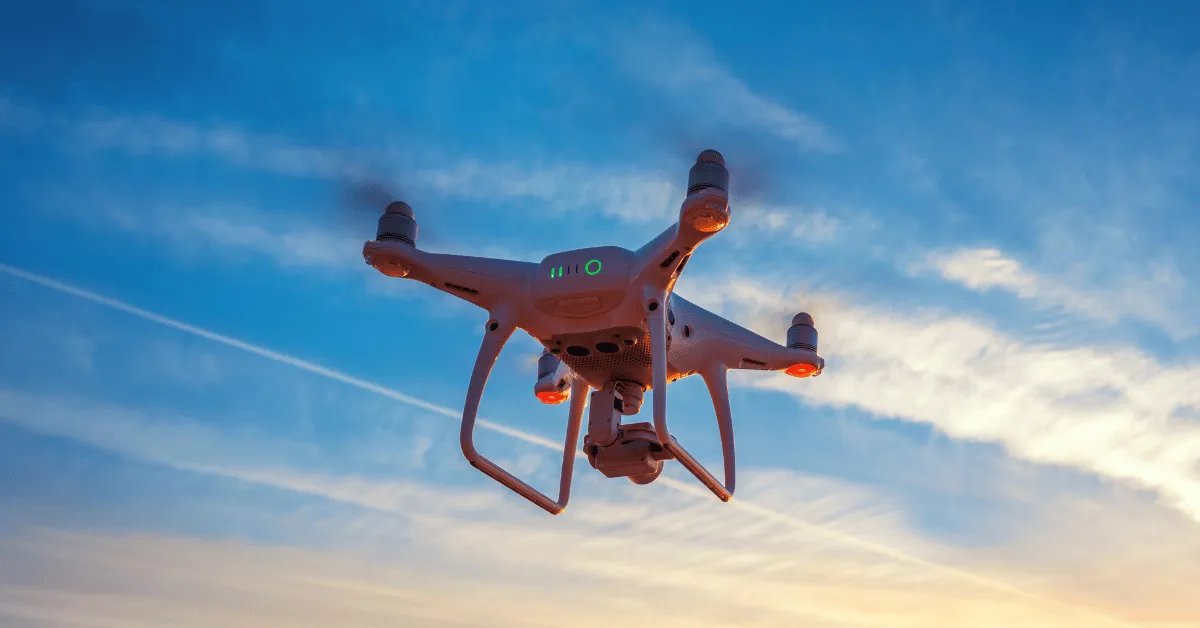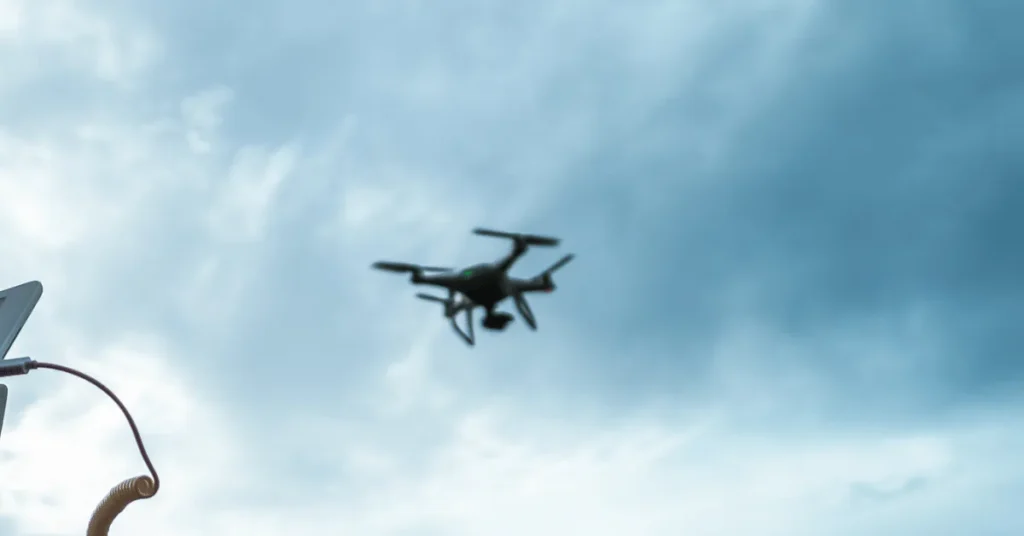What is Auto Orientation on a Drone? (How to Use it?)

As these unmanned aerial vehicles continue to advance in technology, they are equipped with an array of features designed to enhance their performance and ease of use. One such feature that has gained prominence is “Auto Orientation.”
So, What is Auto Orientation on a drone?
Auto Orientation is a cutting-edge technology integrated into modern drones to automate the process of aligning the aircraft with a specific reference point or direction. Essentially, it ensures that the drone maintains its correct orientation during flight, eliminating the need for manual adjustments by the pilot.
In this article, we will delve into what Auto Orientation on a drone entails, its benefits, and how it works to provide a seamless flying experience.
Key Takeaways
- Auto Orientation is a cutting-edge technology in modern drones that automates alignment with a reference point during flight.
- It ensures the drone maintains correct orientation, eliminating the need for manual adjustments by the pilot.
- Auto Orientation enhances flight stability, enabling smoother movements even in challenging conditions.
- The feature empowers both novice and experienced pilots for a hassle-free flying experience.
- It contributes to exceptional aerial footage and photography with unparalleled clarity.
- Auto Orientation is valuable for recreational and professional drone applications, including surveying and cinematography.
- Pilots should avoid over-reliance on Auto Orientation and maintain manual piloting skills.
- Calibration of drone sensors is essential for optimizing Auto Orientation accuracy.
- Some popular drone models with Auto Orientation include DJI Mavic Air 2 and Autel Robotics EVO II.
- Safety remains a priority; pilots should be vigilant during flight and prepared to take manual control if needed.
What is auto orientation on a drone?
Auto Orientation on a drone is undeniably a remarkable and groundbreaking feature that offers a myriad of advantages to drone enthusiasts and pilots alike.
This cutting-edge technology seamlessly and intelligently aligns the drone with pinpoint accuracy to a predetermined reference point or direction throughout its entire flight journey.
With the implementation of Auto Orientation, gone are the days of laborious manual adjustments by the pilot.
The drone now possesses the exceptional ability to autonomously maintain its correct orientation, freeing the pilot from the burden of constant tinkering and ensuring a truly hassle-free flying experience.
This advanced functionality contributes significantly to the overall stability and precision of the drone’s flight. It ensures that the aircraft remains steadily balanced, allowing for smoother and more fluid movements even in challenging weather conditions or intricate flight paths.
As a result, the quality of aerial footage and photography reaches new heights, capturing breathtaking moments with unparalleled clarity.

The brilliance of Auto Orientation lies in its ability to simplify the drone flying experience for users of all skill levels.
Novice pilots can confidently navigate the skies, while seasoned flyers can focus on executing creative and dynamic aerial maneuvers without being encumbered by manual orientation adjustments.
Beyond the realm of recreational drone flying, this technology has proven immensely valuable in various professional applications.
From aerial surveying and mapping to cinematography and search-and-rescue operations, Auto Orientation empowers users to achieve exceptional results with greater efficiency and accuracy.
However, it’s essential to remain mindful of potential limitations, as no technology is without its caveats. While Auto Orientation enhances the ease and precision of flight, pilots must not become overly reliant on this feature.
Sustaining proficiency in manual piloting skills ensures adaptability in situations where technology might face challenges, such as adverse weather conditions or GPS signal interference.
Read More: Can a drone hurt you?
What are the advantages and disadvantages of auto orientation on a drone?
It’s great to see your interest in Auto Orientation on drones. Let me break down the advantages and disadvantages for you.
Advantages of Auto Orientation:
- Precision in Flight: Auto Orientation ensures the drone maintains its correct alignment throughout the flight, resulting in precise and stable movements, even in challenging conditions.
- Hassle-Free Flying: With this cutting-edge technology, manual adjustments are a thing of the past. Pilots can enjoy a hassle-free flying experience, focusing on capturing stunning aerial footage.
- User-Friendly: Auto Orientation makes drone flying accessible to users of all skill levels. Beginners can confidently navigate the skies, while experts can execute dynamic maneuvers with ease.

- Professional Applications: It’s not just for recreational use; professional applications like aerial surveying, cinematography, and search-and-rescue operations benefit from this feature’s accuracy and efficiency.
Disadvantages of Auto Orientation:
- Over-Reliance: One potential drawback is over-reliance on this technology. Pilots need to maintain proficiency in manual piloting skills to adapt to challenging situations.
- Limitations: While highly beneficial, Auto Orientation may have some limitations, particularly in adverse weather conditions or areas with GPS signal interference.
Read More: How does DJI drone communicate?
How to use auto orientation on a drone?
Using Auto Orientation on a drone is an absolute game-changer, and it’s surprisingly simple! Here’s a step-by-step guide to get you started:
- Activation: First, check your drone’s user manual or settings to activate the Auto Orientation feature. It may be listed under flight control or stabilization settings.
- Calibration: Before taking flight, ensure your drone’s sensors are properly calibrated. Calibration optimizes the accuracy of Auto Orientation, providing you with seamless flight experiences.
- Flight Planning: Plan your flight path and determine reference points to fully leverage Auto Orientation. The technology will automatically align the drone to these points during the flight, keeping it on track.
- Taking Off: Once you’re ready to take off, launch your drone as you normally would. Auto Orientation will kick in, automatically aligning the aircraft to the predetermined reference points.

- Enjoy Hassle-Free Flying: Now comes the exciting part—enjoying hassle-free flying! Auto Orientation will handle the orientation adjustments, allowing you to focus on capturing stunning aerial footage and exploring the skies.
- Safety First: While Auto Orientation is impressive, remember to prioritize safety. Always keep an eye on your drone during flight and be prepared to take manual control if needed, especially in challenging conditions.
Using Auto Orientation opens up a world of possibilities for your drone flights. Whether you’re capturing breathtaking landscapes or conducting professional aerial surveys, this feature will undoubtedly elevate your drone flying experience.
Big Tip For Your
When using the Auto Orientation feature on your drone, remember that it’s a game-changer in enhancing flight stability and ease of use.
However, don’t solely rely on this technology. Keep honing your manual piloting skills to adapt to challenging situations and ensure a safe and enjoyable flying experience. Enjoy exploring the skies with your drone and capture stunning aerial footage with confidence!
What drones have an auto orientation?
Auto Orientation is an incredible feature that has revolutionized the way we fly drones. Many drones nowadays come equipped with this cutting-edge technology to enhance the overall flying experience. Here are some popular drone models that boast the remarkable Auto Orientation feature:
- DJI Mavic Air 2: This drone from DJI is a crowd-favorite with its outstanding camera capabilities and intelligent flight modes, including Auto Orientation. It’s perfect for both recreational flying and professional photography.
- DJI Phantom 4 Pro V2.0: The Phantom series is renowned for its advanced features, and the Phantom 4 Pro V2.0 is no exception. With Auto Orientation, it delivers stable flights and precise movements.
- Autel Robotics EVO II: Autel Robotics offers the EVO II, a powerful foldable drone with a 6K camera. Its Auto Orientation feature ensures smooth flights and seamless orientation adjustments.
- Yuneec Typhoon H Pro: Yuneec’s Typhoon H Pro boasts a hexacopter design and features, including Auto Orientation, making it a versatile choice for aerial photography and videography.

- Autel Robotics EVO Lite: Another excellent option from Autel Robotics, the EVO Lite, comes with Auto Orientation for improved flight stability and orientation control.
- Holy Stone HS720E: This drone is a budget-friendly option with Auto Orientation and other smart flight modes, making it suitable for beginners and hobbyists.
Read More: What can interfere with drone signal?
Remember, drone technology is continuously evolving, and new models may be equipped with Auto Orientation in the future. It’s always a good idea to check the latest product specifications and reviews to find the best drone that suits your needs.
Important FAQs
Can I activate Auto Orientation on any drone model?
Does Auto Orientation work in all weather conditions?
How do I calibrate my drone’s sensors for Auto Orientation?
Can Auto Orientation replace the need for manual piloting skills?
Are there any flight limitations when using Auto Orientation?
Final Thoughts
Auto Orientation is a groundbreaking feature in modern drones that simplifies the flying experience for users of all skill levels.
It ensures precise alignment, stable movements, and hassle-free flying, making it valuable for both recreational and professional use.
While Auto Orientation offers numerous advantages, pilots need to maintain manual piloting skills and be aware of potential limitations in adverse conditions.
All images in this article are taken from Canva.com
Can You Fly a Drone in Petra? (Is It Possible?)
“Wondering if Petra is drone-friendly? 🚁 Uncover the facts and possibilities in our quick guide. Don’t miss the chance to capture stunning views – read the article!”







